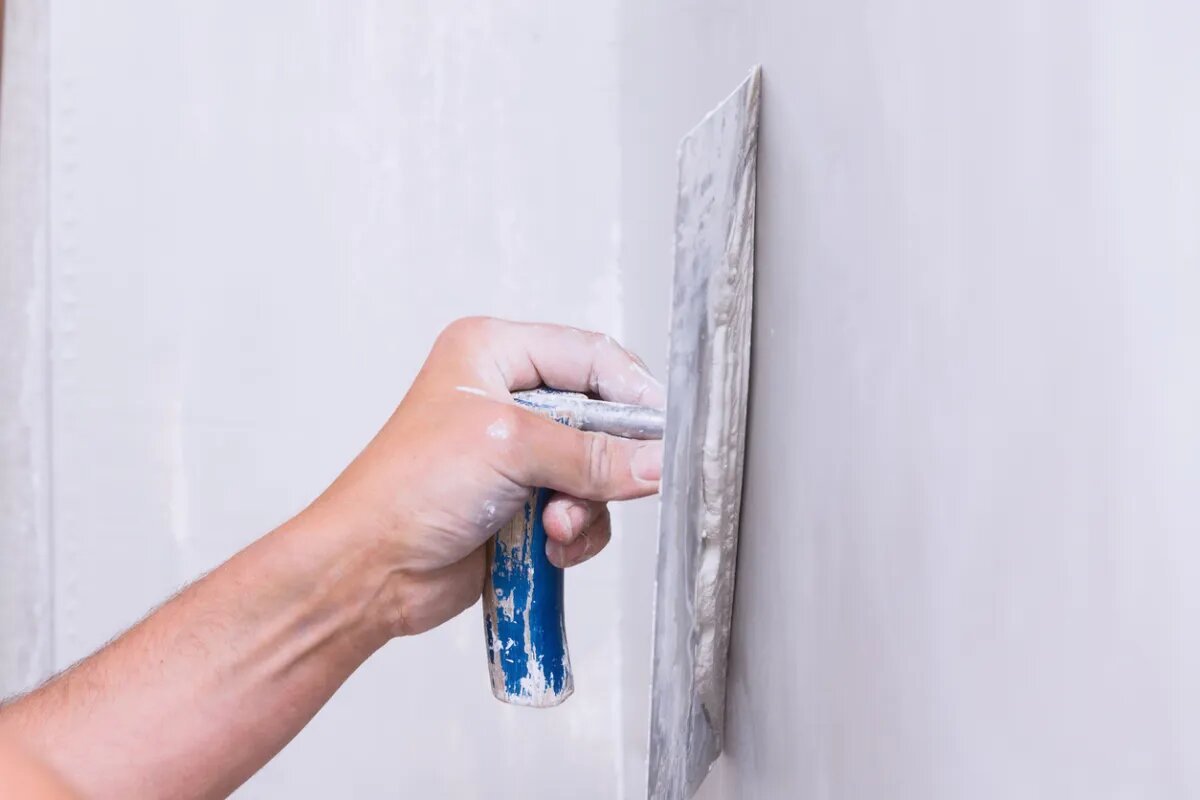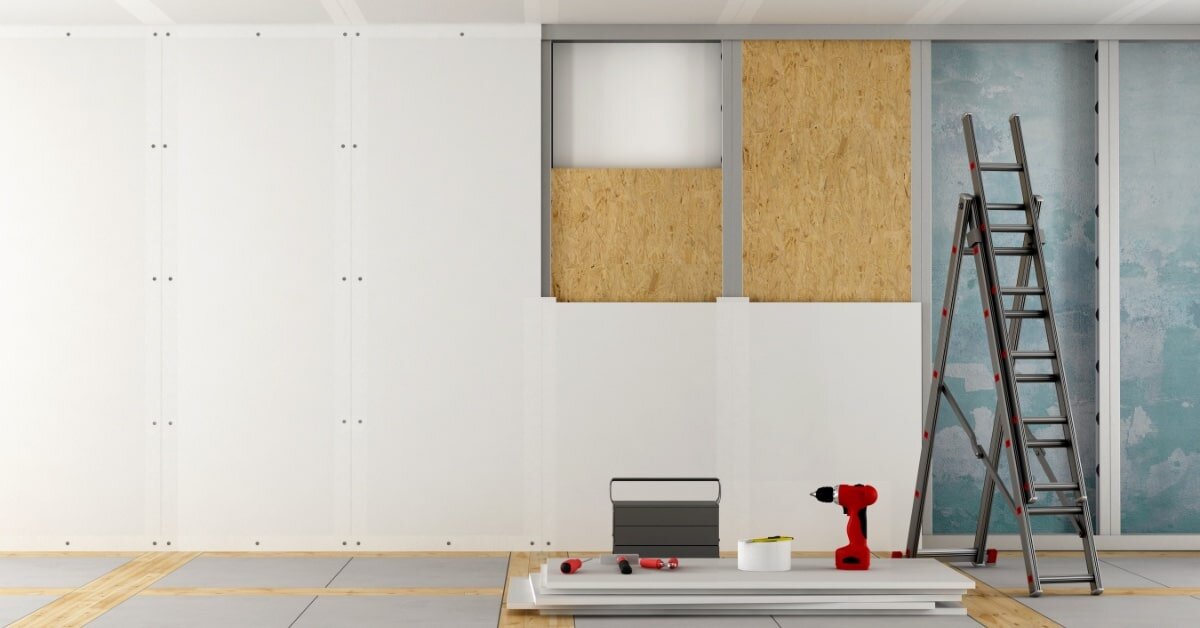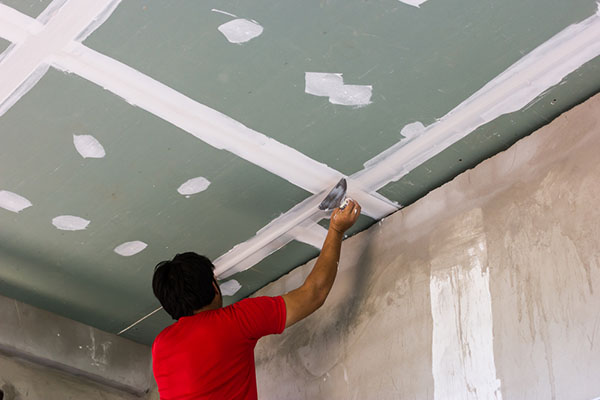When it comes to finishing walls and ceilings, two popular methods stand out: GIB stopping and plastering. Both techniques aim to create smooth, aesthetically pleasing surfaces, but they differ significantly in materials, application methods, and finished results. Understanding these differences can help homeowners, builders, and DIY enthusiasts choose the right method for their project. This comprehensive article delves into the key characteristics of both methods, detailing materials, processes, tools, and finishes. We’ll also compare the implications of each in terms of time, cost, skill levels, maintenance, and ideal usage scenarios.
Key characteristics of gib stopping
GIB stopping is a specialized finishing process used primarily in the treatment of plasterboard, often referred to as GIB® board in some regions. This technique involves the application of specific compounds designed to conceal the joints and seams between plasterboard sheets. The goal is to achieve a smooth, seamless surface that is ready for painting or wallpapering. Here, we cover some of the most salient features of GIB stopping to clarify how it stands apart from traditional plastering.

Materials used in gib stopping
The materials employed in GIB stopping are essential to achieving its distinct smooth finishes. Comparatively, GIB stopping materials are specifically engineered to work with plasterboard, offering quick setting times and robust adhesion. Here’s an overview:
- Joint Compounds: These are the primary materials used in GIB stopping. They are available in pre-mixed and powder forms, the latter requiring water for activation. The compounds are typically composed of gypsum dust and binding agents to ensure they can spread smoothly and set quickly. They are formulated to be sandable once dry, allowing for a polished finish.
- Tape: To ensure joints do not crack over time, reinforcing tape is embedded within the joint compound. Options include paper tape, which is strong and typically used on flat joints, and fiberglass mesh tape, which offers more flexibility and ease of use.
- Beads: Metal or plastic corner beads are installed on external corners to protect them from damage and maintain sharp, clean edges. These beads are covered with joint compound to blend seamlessly with the rest of the wall or ceiling.
- Backing Compound: For deeper joints or gaps, a backing compound may be used initially. This ensures the surface remains level and consistent.
Each of these materials plays a specific role in ensuring the finished wall is not only aesthetically pleasing but also durable. For example:
- Joint compound fills and smoothens the joints.
- Tape reinforces the joint, preventing future cracks.
- Beads protect vulnerable corners and edges.
The ease of use and the quality of finish the materials offer are reasons why GIB stopping has gained popularity among builders and DIY enthusiasts alike.
Application process of gib stopping
The application of GIB stopping is methodical, involving several systematic steps that contribute to a professional finish. Let’s break this down into a real-life scenario.
- Preparation: Begin by ensuring the plasterboard is clean, free of dust and debris. Any screw holes or minor damages on the surface should also be addressed initially.
- First Coating: A base layer of the joint compound is applied over the seams and joints with a taping knife. The objective is to fill the gaps evenly without leaving bumps or ridges.
- Taping: Immediately after the first coat, a reinforcing tape (either paper or fiberglass) is embedded into the wet compound. This step is crucial to prevent any future cracking.
- Second Coating: Once the first coat and tape have dried, a second layer of joint compound is applied, this time using a wider taping knife to feather out the edges, making the joint less noticeable.
- Sanding: After the second coat has thoroughly dried, sanding is carried out to smoothen any rough patches or ridges present. Fine-grit sandpaper is typically employed to ensure the surface is even.
- Final Coating: A third and final coat of joint compound is applied for maximum smoothness, once again followed by careful sanding after it’s dried to achieve a flawless surface ready for painting or wallpapering.
- Corner Beads: Installing corner beads on external corners, followed by covering them with the joint compound, ensures they align properly with the flat surfaces.
The patience and precision required in this meticulous process is pivotal to achieving the high-quality finishes that GIB stopping is known for. Comparing this step-by-step approach to plastering, it is evident that GIB stopping is more streamlined, typically involving fewer layers and faster drying times.
Tools required for gib stopping
Managing a successful GIB stopping project would be impossible without the right tools. Here’s an insight into the tools necessary:
- Utility Knife: Vital for cutting plasterboard to size and trimming the tape.
- Taping Knives: Various sizes, ranging from 4 inches to 12 inches, for applying joint compounds.
- Hawk: A flat, metal plate to hold the compound while working, offering convenience and efficiency.
- Sanding Block or Sponge: Essential for achieving smooth surfaces between coats.
- Mud Pans: Rectangular pans to hold small amounts of joint compound ready for application.
- Corner Trowel: Specialized tool for ensuring the compound is applied neatly on internal and external corners.

Each of these tools serves a specific function, akin to an artist’s palette, they allow for precise, controlled application and finishing. For instance:
- Taping Knives would resemble paintbrushes of varying sizes, each needed for different stages and areas of the application.
- Hawk operates similarly to a painter’s palette, it’s essential for holding the compound and enabling its easy access during application.
- Corner Trowel is akin to a sculptor’s chisel, ensuring neat corners that add to the overall polished look of the completed wall.
Finish and durability of gib stopped walls
The effectiveness of GIB stopping lies not only in its application but also in its long-term durability and finish quality.
- Finish: A successfully GIB stopped wall is exceedingly smooth, providing a flawless canvas for paint or wallpaper. The finished look is seamless, with no visible joints or imperfections, which is essential for modern, minimalist aesthetics.
- Durability: Although the primary compound used in GIB stopping is robust, the longevity of the finish also depends on proper application. Reinforcement with tape and careful sanding between coats minimizes the risk of cracks or dents over time. However, due to its compound-based nature, GIB stopping may not be as resilient against heavy impact compared to traditional plastering.
Research on materials and techniques, like those published in journals such as the “Journal of Construction Research,” underlines the importance of this method in achieving high-quality finishes. Recognizing accolades from industry authorities like the National Plasterers Council, tools and materials from manufacturers like GIB® are often recommended for ensuring optimal results.
Overall, GIB stopping stands out for its efficacy in creating impeccably smooth surfaces, accentuating aesthetic appeal while also offering commendable durability. It is a testament to how specific materials and well-designed techniques can align harmoniously to deliver desired results.
Overview of plastering techniques
Plastering has been a cornerstone of building practices for centuries, evolving from ancient lime-based mixtures to sophisticated cement and gypsum plasters used today. This time-honored technique transcends mere surface treatment, giving architects, builders, and homeowners a versatile tool for achieving both structural integrity and aesthetic beauty. In comparing the modern techniques of plastering and GIB stopping, it’s essential to grasp the types of plaster involved and the comprehensive steps required to attain a professional finish.
Types of plaster used in plastering
The materials used for plastering are diverse, each chosen for specific applications and desired finishes:
- Lime Plaster: Used since ancient times, lime plaster is breathable and flexible, making it ideal for older structures where moisture regulation is critical. Lime plaster consists of lime, sand, and water, and it is favored for its eco-friendliness and long-lasting nature.
- Cement Plaster: Comprising a mixture of cement, sand, and water, cement plaster is esteemed for its durability and strength. It’s typically used in exterior applications or areas exposed to moisture, providing a hard, resilient surface.
- Gypsum Plaster: Known for its rapid setting time, gypsum plaster is preferred for interior surfaces. It provides a smooth finish ideal for painting or wallpapering and is also used extensively to create decorative moldings and cornices.
- Clay Plaster: An environmentally friendly option, clay plaster blends clay, sand, and natural fibers for a finish that regulates humidity and insulates well. This type of plaster is gaining traction in sustainable construction practices.
- Acrylic Plaster: Comprising acrylic resins, this type of plaster allows for decorative finishes and provides excellent flexibility and adhesion. Acrylic plaster is often used in creative applications for both interiors and exteriors due to its weather-resistant properties.

The distinct characteristics of these plaster types reflect their varied applications:
- Lime Plaster’s breathability makes it suitable for period renovations.
- Cement Plaster’s robustness renders it perfect for external walls.
- Gypsum Plaster’s smooth finish caters well to modern interiors.
- Clay Plaster’s sustainability aligns it with eco-friendly builds.
- Acrylic Plaster’s flexibility allows for creative decorative solutions.
These materials encapsulate the diversity and adaptability of plastering, making it integral in both traditional and contemporary settings.
Steps involved in the plastering process
The plastering process is multi-faceted, requiring careful preparation and meticulous application:
- Surface Preparation: Clean the existing surface, remove dust, dirt, and any loose materials. Repair any holes or major imperfections to ensure a consistent surface for the plaster to adhere to.
- Mixing Plaster: Depending on the type of plaster used, mix it according to the manufacturer’s directions to achieve the desired consistency. For gypsum plaster, a smooth, lump-free paste is essential.
- Applying the Base Coat: Using a trowel, apply the base coat of plaster. This layer is usually thicker and provides insulation and support for the finish coat. It covers all irregularities and adheres firmly to the prepared surface.
- Setting Time: Allow the base coat ample time to set. This period can vary significantly depending on the plaster type and environmental conditions.
- Sanding: Smooth out rough patches on the base coat using fine-grit sandpaper or a float to create an even surface ready for the finish coat.
- Applying the Finish Coat: Apply a thinner layer of plaster over the base coat. This coat should be meticulously smoothed out using a trowel to eliminate any visible imperfections. The finish coat gives the final appearance to the wall.
- Finishing Touches: Once the finish coat has dried, additional sanding may be performed if necessary to achieve a perfectly smooth surface. Polishing and protective coatings can be added if required.
- Curing and Drying: Proper curing is critical for the longevity and performance of the plaster. Allow the plaster to cure fully in a well-ventilated environment, avoiding rapid drying which can lead to cracks.
Each step in plastering is akin to stages in a meticulous artwork. Preparation sets the canvas, base coats add texture, and finishing coats refine and perfect the surface. Plastering requires a blend of skill and patience to attain the highest quality results.
Tools and equipment for plastering
As with GIB stopping, having the right tools is essential for successful plastering. Here’s a comprehensive list:
- Hawk: A portable surface for holding plaster, making it easier to transfer material directly onto the trowel.
- Trowel: The quintessential tool for applying and smoothing plaster. Trowels come in various types:
- Finishing Trowel: For smoothing the final coat.
- Corner Trowel: Specially designed for getting into the corners.
- Plastering Trowel: Larger and used for applying the bulk of the plaster.
- Plastering Float: Used to even out the plaster surface and eliminate any minor imperfections before the plaster sets.
- Mixing Bucket: Essential for mixing the plaster. Ensuring it is clean prevents contamination and lumps in the plaster mix.
- Plastering Darby: Used to level large areas of plaster, especially useful for walls and ceilings.
- Plastering Sponge: Helps smooth out the surface of the plaster, especially as it starts to set and harden.
- Scraper and Jointing Knife: Useful for smoothing seams and ensuring a flat surface.
- Paddle Mixer: Facilitates perfect plaster consistency by making thorough mixing quicker and easier.
These tools are critical in achieving the various textures and finishes desired in plaster applications. Each serves a specialized role, contributing to the uniformity and finish quality of the plastered surface.

Textures and finishes achieved through plastering
One of the most remarkable aspects of plastering is its versatility in achieving different textures and finishes:
- Smooth Finish: Using a trowel and float, a smooth, even surface ideal for painted walls and ceilings is attained.
- Textured Finish: Techniques like slap brush, knockdown, and stippling create unique patterns and textures on plastered surfaces. Each method employs different tools and techniques to achieve distinct aesthetics.
- Stucco: Frequently used for both decorative and protective purposes in exterior applications, stucco involves layering plaster to achieve a textured, durable finish.
- Venetian Plaster: A sophisticated technique involving multiple thin layers of plaster, each polished to create a smooth, marble-like finish. This method requires considerable skill and attention to detail but results in an exceptionally luxurious appearance.
- Pebbledash: An exterior finish where small pebbles are thrown and pressed into the wet plaster to create a rugged, textured surface.
The potential finishes with plastering are extensive, offering almost limitless possibilities depending on the desired effect. From traditional, rustic textures to ultra-modern smooth finishes, plastering provides a palette for creative expression.
Comparison of gib stopping and plastering
GIB stopping and plastering, while related, serve different purposes and require different techniques. Below, we compare these processes on various crucial aspects.
Time and cost implications of each method
Time Considerations:
- GIB Stopping: Typically faster, as it focuses on seams and joints of plasterboards. Quick-drying compounds and fewer layers mean less overall time is spent.
- Plastering: A more time-intensive process, involving multiple coats, each requiring significant drying time. This results in longer project timelines but often provides more durable finishes.
Cost Implications:
- GIB Stopping: Generally more budget-friendly due to lower material costs and quicker labor time.
- Plastering: Tends to be more expensive, as it involves extensive material use and requires skilled labor for multiple layers and detailed finishes.
Skill level required for gib stopping vs. plastering
Skill Level for GIB Stopping:
- Intermediate to Advanced DIY: While homeowners with some experience might undertake GIB stopping, achieving a flawless finish can be challenging. Professional skills yield better results.
Skill Level for Plastering:
- Professional Level: Due to the complexity of mixing, application, and finishing, plastering generally requires a higher skill level. Proper training and experience are critical to getting the desired outcome.
Long-term maintenance of gib stopped and plastered walls
GIB Stopped Walls:
- Maintenance: Susceptible to dents and minor damages over time, especially in high-traffic areas. Requires occasional touch-ups or minor repairs to maintain appearance.
Plastered Walls:
- Maintenance: Typically more durable and resistant to impacts and wear. Maintenance may include occasional re-coating or touch-ups in high-wear areas but less frequently than GIB stopped walls.
Choosing between gib stopping and plastering
Assessing factors such as current surface conditions, desired finishes, budget, time constraints, and durability needs will help homeowners and contractors make informed decisions regarding which method to employ.

Factors influencing the decision between the two techniques
- Condition of Surfaces: Existing surface conditions and materials can dictate whether GIB stopping (for new plasterboard) or plastering (for varied substrates) is more appropriate.
- Desired Finish: The aesthetic goal whether a smooth, modern look or textured finish will heavily influence the choice.
- Budget: Cost constraints may lead toward GIB stopping for its quicker, more affordable process.
- Time Frame: Projects with tight deadlines may favor the faster GIB stopping technique.
- Skill Availability: The availability of skilled labor can also determine the practicality of each method.
Recommended scenarios for using gib stopping
Instances for GIB stopping include new construction or renovations involving plasterboard, repairing or enhancing visual appearance with minimal material application, and finishing areas requiring quick and cost-effective solutions.
Ideal situations for opting for plastering
Plastering shines in projects needing enhanced wall textures, structural reinforcement, comprehensive smoothing over non-GIB surfaces, and achieving customized decorative finishes.
Conclusion
Navigating the choice between GIB stopping and plastering involves understanding the nuances and specific applications of each technique. Whether based on budget, time, skill levels, or desired finishes, each method offers distinct advantages. By comprehensively understanding both processes, homeowners, contractors, and DIY enthusiasts can make informed decisions, ensuring optimal results for their projects.
